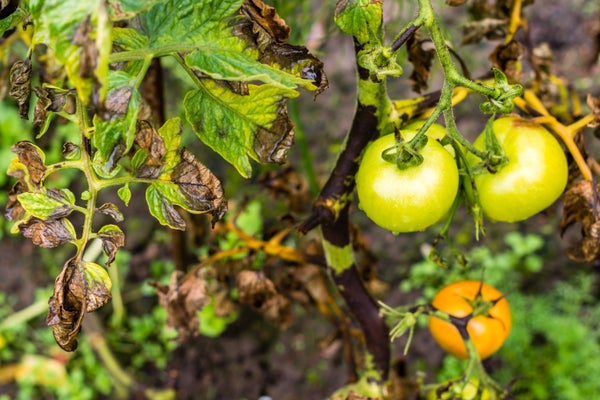When wildfires rip through a landscape, firefighters have the first—and most immediate—job. But then, that burned moonscape often passes into the hands of restoration ecologists, who yank out invasive species, and plant native seedlings instead.
"We try to artificially give a start to these communities that should resemble the communities that were there prior to a disturbance." Matteo Garbelotto, a plant pathologist at U.C. Berkeley. The problem, he says, is that microscopic killers sometimes hitchhike on native seedlings grown in nurseries. As happened at one restoration site in the San Francisco Bay area, where restorers hoped that nursery-grown natives called toyons and sticky monkey flowers could be reintroduced.
"Plant ecologists were saying why are these toyons dying here, or why are these sticky monkey flowers dying in large numbers in this restoration site? And so it happens that each one of those plant species was reintroduced in a restoration effort and had one or sometimes multiple of these pathogens that belonged to the genus Phytophthora, which incidentally is the same genus of the pathogen that causes sudden oak death, and it's also the same genus of the pathogen that caused the Irish potato famine."
On supporting science journalism
If you're enjoying this article, consider supporting our award-winning journalism by subscribing. By purchasing a subscription you are helping to ensure the future of impactful stories about the discoveries and ideas shaping our world today.
Garbelotto and his colleagues surveyed five native plant nurseries for the Phytophthora pathogen. And found that more than a quarter of the plants sampled were infected. They also discovered, in separate work, that a common chemical used to suppress the pathogen in nurseries can actually breed resistance. "The passage of these strains through these production facilities, sometimes it can make them more aggressive."
They reported their work in the journals PLOS ONE and Plant Pathology. [PLOS ONE, Shannon Hunter et al., Evidence for rapid adaptive evolution of tolerance to chemical treatments in Phytophthora species and its practical implications; Plant Pathology, L. Sims et al., Control of Phytophthora species in plant stock for habitat restoration through best management practices]
But there is a solution to root out these invisible killers. A yearlong regimen of stricter sanitation at native plant nurseries—like pasteurizing pots and soil—appeared to eliminate the pathogen. And disease-free seedlings means damaged landscapes have a better chance at bouncing back.
—Christopher Intagliata
[The above text is a transcript of this podcast.]

